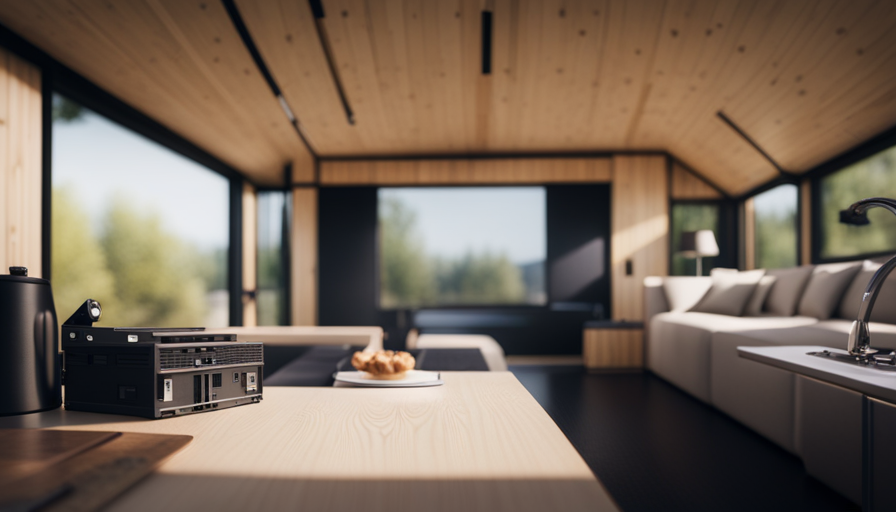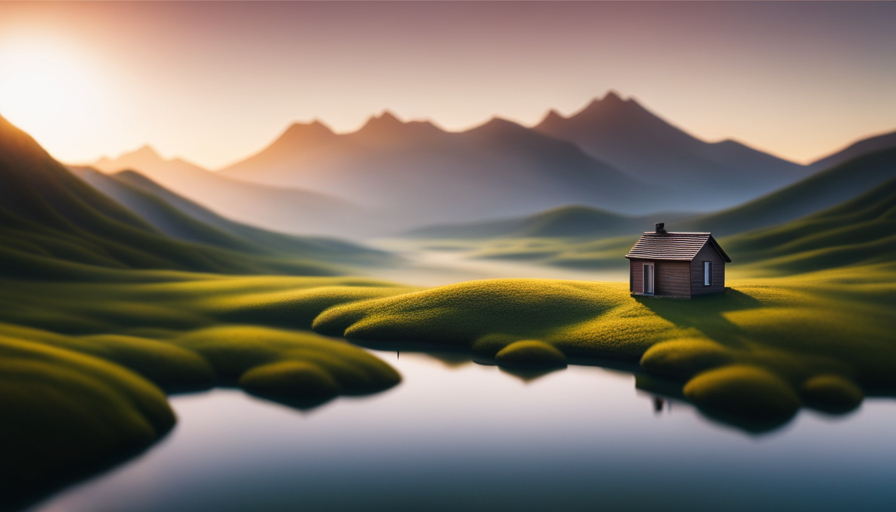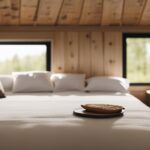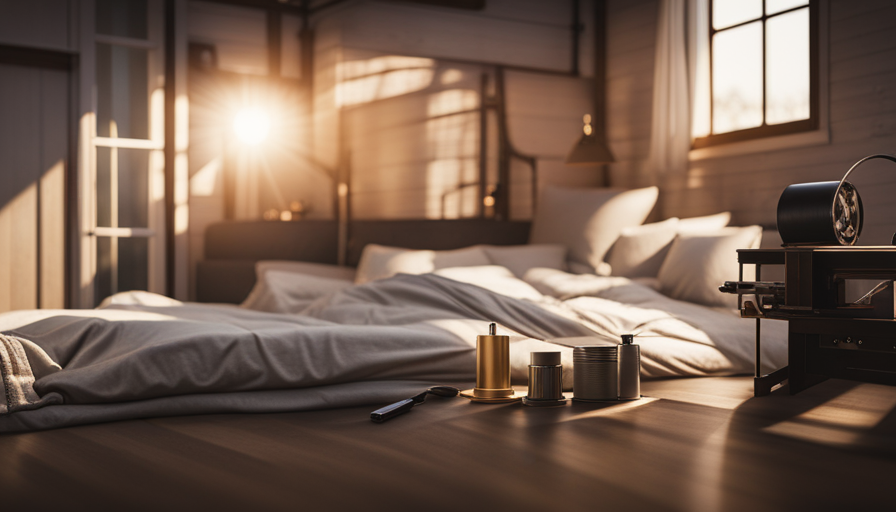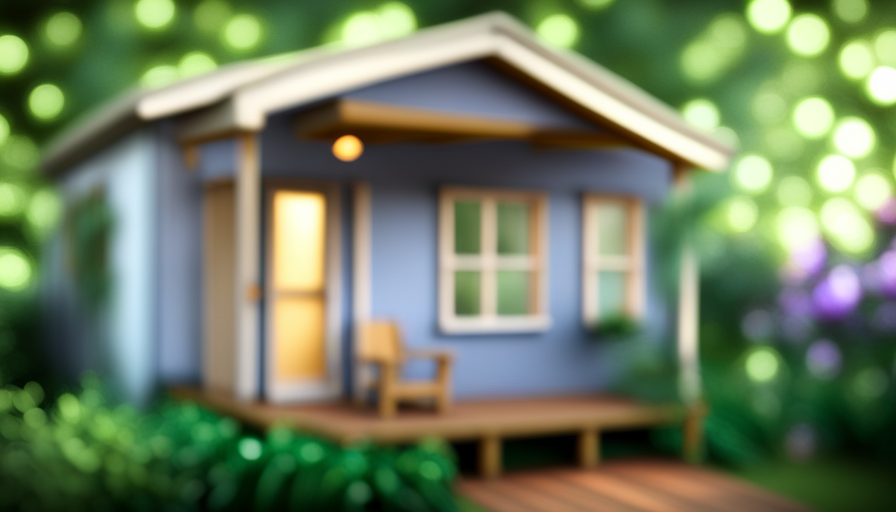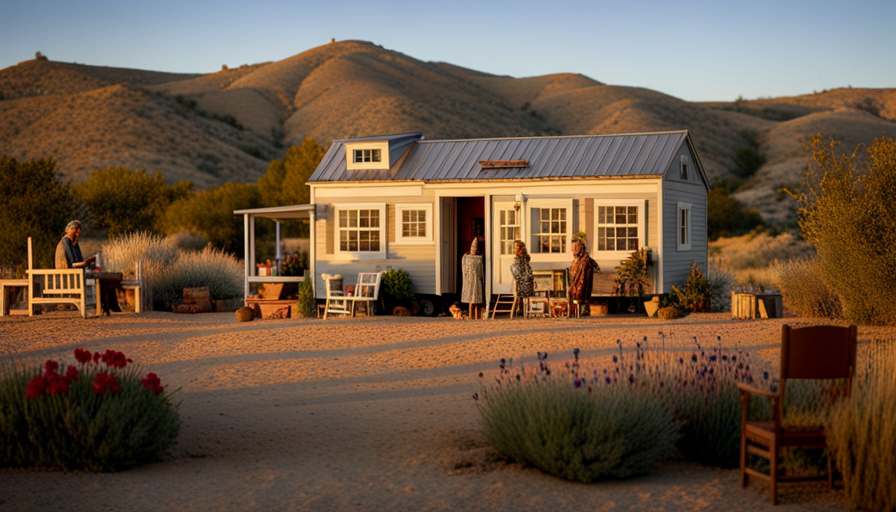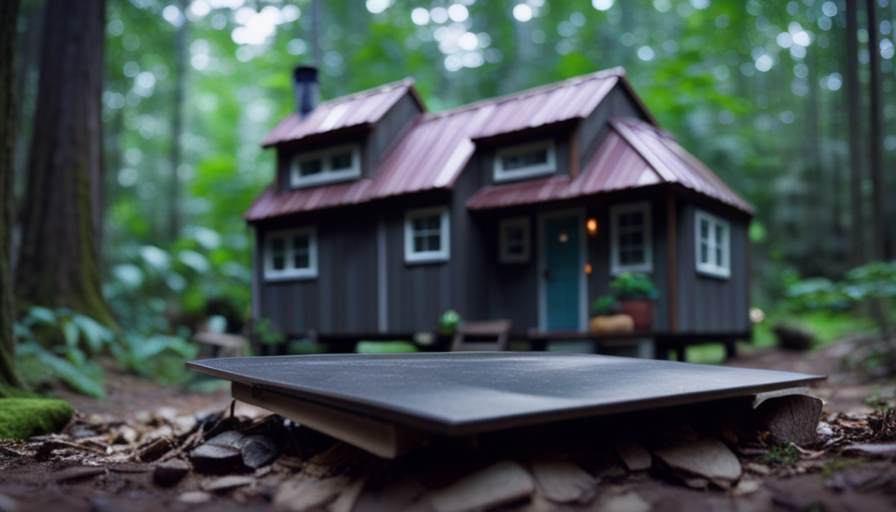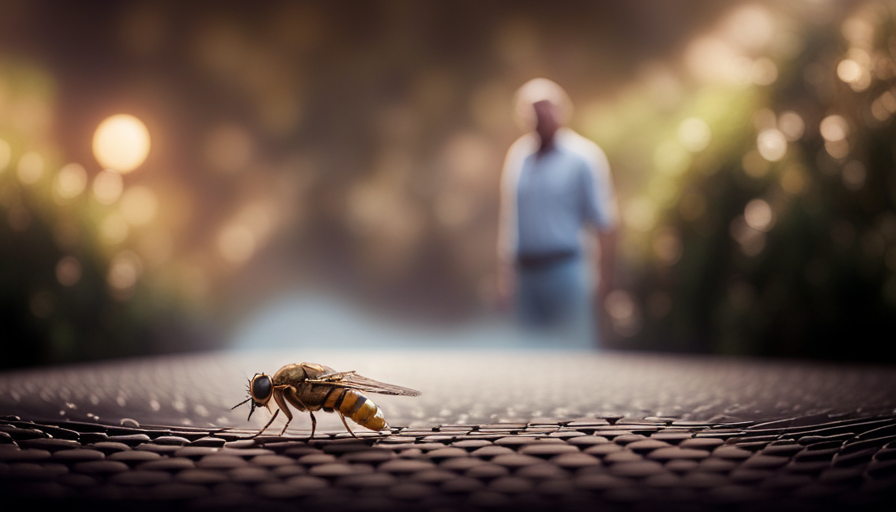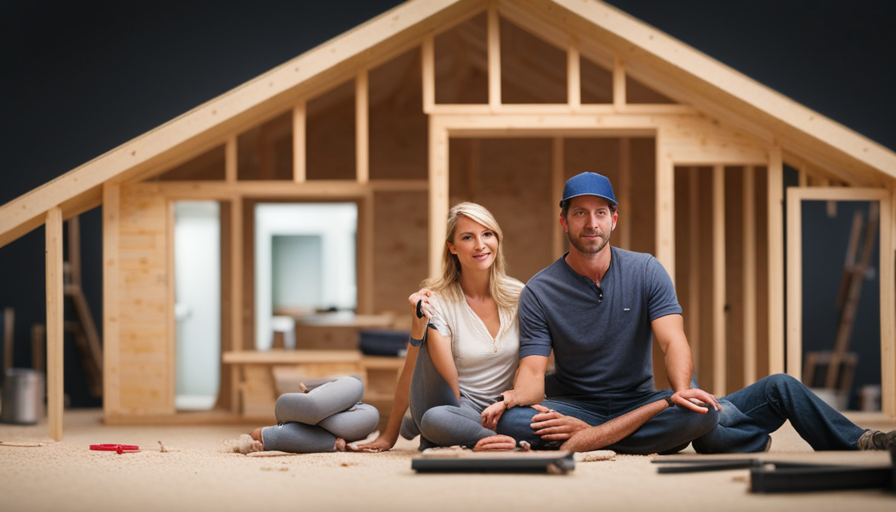When building a small house, there are many factors to consider. It involves balancing budget limitations, zoning laws, and design preferences while prioritizing safety and compliance.
It may seem overwhelming at first, but fear not, for I am here to guide you through this intricate process. As a seasoned builder, I have had the privilege of constructing numerous tiny houses, each with its own unique set of challenges and triumphs. Through my experiences, I have gained a wealth of knowledge and expertise in this field.
In this article, I will delve into the various factors that you need to consider when embarking on your own tiny house construction journey. From determining your budget and financing options, to understanding zoning regulations and selecting the right location, I will provide you with the necessary insights to make informed decisions.
We will also explore design considerations, material selection, plumbing and electrical systems, as well as sustainable and eco-friendly features. So, let us embark on this adventure together and create the tiny house of your dreams.
Key Takeaways
- Budget constraints and financing options are important factors to consider in tiny house construction.
- Understanding and complying with zoning regulations is crucial to avoid legal issues.
- Choosing the right location for a tiny house, considering proximity to amenities and services, is essential.
- Design considerations such as overall theme/style, colors, patterns, materials, multipurpose furniture, and built-in storage should be taken into account.
Determine Your Budget and Financing Options
Now, it’s time for me to figure out my budget and how I’m gonna finance this awesome tiny house of mine!
Budgeting for a tiny house is crucial to ensure that I can afford all the materials, labor, and any unexpected expenses that may arise. I need to carefully consider my income, savings, and any loans or financing options available to me. It’s important to create a realistic budget that covers not only the construction costs but also ongoing expenses such as utilities and maintenance.
Researching different financing options, such as personal loans, RV loans, or crowdfunding, can help me determine the best way to fund my tiny house project.
Once I have my budget and financing in place, I can move on to the next step: researching and understanding zoning regulations.
Research and Understand Zoning Regulations
Before you begin building your petite dwelling, be sure to delve into the details of zoning regulations. Understanding legal requirements and researching local restrictions is crucial when constructing a tiny house.
Zoning regulations vary from one area to another, and it is essential to familiarize yourself with the specific rules and regulations in your locality. Some areas may require a minimum square footage for residential dwellings, while others may have restrictions on the placement or size of accessory buildings. Additionally, certain zones might prohibit tiny houses altogether or require them to be classified as accessory dwelling units.
By understanding and complying with these regulations, you can avoid potential legal issues and ensure that your tiny house is in compliance with local laws.
Now that you have a grasp on zoning regulations, let’s move on to choosing the right location for your tiny house.
Choose the Right Location for Your Tiny House
Find the perfect spot to set down your charming little abode and watch as your tiny dreams come to life. Choosing the right location for your tiny house is crucial to ensure a harmonious living experience.
Consider the benefits of off-grid living, where you can embrace self-sufficiency and reduce your environmental impact. Look for areas with ample sunlight for solar panels and access to water sources for sustainable living.
Additionally, think about proximity to amenities and services that are important to you, such as grocery stores, healthcare facilities, and recreational activities. Take into account zoning regulations and ensure that your chosen location allows for tiny houses.
By carefully selecting the right spot, you can create a serene and functional living space that perfectly suits your needs. Transitioning into the next section about design and layout considerations, it’s important to keep in mind how the location will impact the overall design and functionality of your tiny house.
Design and Layout Considerations
Create a cozy and functional space by envisioning the perfect design and layout that suits your unique needs and reflects your personal style.
When it comes to designing and decorating the interior of your tiny house, it’s important to consider both design aesthetics and practicality.
Start by thinking about the overall theme or style you want to achieve, whether it’s minimalist, rustic, or modern.
Choose colors, patterns, and materials that will enhance the visual appeal of your space while also maximizing functionality.
Consider using multipurpose furniture and built-in storage solutions to make the most of your limited space.
Don’t forget to add personal touches and décor items that make the space feel like home.
With the right design and layout, your tiny house can be a comfortable and inviting retreat.
In the next section, we’ll discuss selecting the right materials and construction methods to bring your design to life.
Selecting the Right Materials and Construction Methods
To bring your vision of a cozy and functional space to life, you’ll need to choose the right materials and construction methods that suit your unique needs and style, don’t you?
When it comes to building a tiny house, sustainable building practices and cost-effective options are essential considerations. Opting for eco-friendly and energy-efficient materials, such as reclaimed wood or recycled insulation, not only reduces your environmental impact but also saves you money in the long run.
Additionally, selecting construction methods that minimize waste and maximize efficiency can further enhance the overall sustainability of your tiny house project. It’s important to do thorough research and consult with professionals to ensure you make informed decisions about the materials and construction methods that best fit your requirements and budget.
Now, let’s delve into the next section about efficient use of space and storage solutions.
Efficient Use of Space and Storage Solutions
Make the most of your limited square footage by strategically arranging furniture and utilizing clever storage solutions that maximize space in your cozy abode. Here are some tips to help you efficiently use space and find creative organization solutions in your tiny house:
-
Opt for space-saving furniture like multi-functional pieces that serve multiple purposes, such as a sofa that can turn into a bed or a coffee table with hidden storage compartments.
-
Consider installing wall-mounted shelves and hooks to take advantage of vertical space for storing books, kitchen utensils, and other items.
-
Use under-bed storage containers or built-in drawers to store clothing and linens.
-
Utilize the back of doors for hanging shoe organizers, jewelry organizers, or even mini spice racks.
-
Incorporate foldable and collapsible items like tables and chairs that can be easily stored away when not in use.
By implementing these space-saving techniques and creative organization ideas, you can make your tiny house feel more spacious and organized.
Transitioning into the subsequent section about plumbing and electrical considerations, it’s important to also consider the practical aspects of your tiny house’s infrastructure.
Plumbing and Electrical Considerations
When it comes to plumbing and electrical in your cozy abode, it’s essential to ensure that your infrastructure is both practical and efficient. Proper plumbing installation is crucial for a tiny house, as space is limited and every inch counts. Consider using compact fixtures and efficient water systems to maximize functionality without sacrificing comfort.
Additionally, electrical wiring should be carefully planned to accommodate your power needs while minimizing the use of space. Utilize smart storage solutions and hidden wiring to keep your tiny house clutter-free and visually appealing.
Now that we’ve covered plumbing and electrical considerations, let’s move on to the next aspect: heating and cooling systems.
Heating and Cooling Systems
When it comes to constructing a tiny house, it’s essential to consider the heating and cooling systems. Now, let’s delve into this crucial aspect of creating a comfortable living space.
In my experience, I’ve found that energy-efficient options are the way to go. These systems not only help reduce utility costs but also minimize the environmental impact. One option I highly recommend is installing a heat pump, which can both heat and cool the house efficiently.
Additionally, incorporating proper insulation and sealing any air leaks is essential for maintaining a comfortable temperature inside the tiny house.
Lastly, don’t forget about ventilation systems, such as ceiling fans and windows, which can help circulate air and improve indoor air quality.
With these considerations in mind, we can create a cozy and sustainable living environment.
Moving forward, let’s explore the sustainable and eco-friendly features of tiny houses.
Sustainable and Eco-Friendly Features
Sustainable and eco-friendly features are essential in creating a living space that minimizes its environmental impact. One interesting statistic to consider is that tiny houses use about 2,000 kWh of electricity per year, compared to the average American home’s usage of 10,972 kWh per year. Incorporating green building techniques and energy-efficient systems can greatly reduce the energy consumption of a tiny house.
One important aspect to focus on is insulation, as it plays a crucial role in maintaining a comfortable temperature inside the house. Using materials with high thermal resistance, such as spray foam or cellulose insulation, can effectively prevent heat loss during winter and heat gain during summer.
Additionally, installing energy-efficient appliances and LED lighting can further reduce electricity usage. By implementing these sustainable and eco-friendly features, tiny houses can not only minimize their environmental impact but also save on energy costs.
Moving on to the next section about safety and building codes compliance, it is important to address the structural integrity and safety measures of a tiny house.
Safety and Building Codes Compliance
Ensuring the safety and compliance of a tiny house is crucial for protecting you and your loved ones, giving you peace of mind in your cozy sanctuary. When constructing a tiny house, it’s important to familiarize yourself with local building codes and obtain the necessary building permits. These permits ensure that your tiny house meets the required safety standards and regulations.
Additionally, implementing fire safety measures is essential to protect your tiny house from potential hazards. This includes installing smoke detectors, fire extinguishers, and fire-resistant materials. It’s also important to have an evacuation plan in place and to ensure that the tiny house has proper exits and emergency exits.
By adhering to building codes and implementing fire safety measures, you can create a safe and secure living space in your tiny house.
Frequently Asked Questions
How do I find a builder or contractor to construct my tiny house?
Finding a builder or contractor for my tiny house can be daunting, but it’s a crucial step in the construction process. I’ll carefully consider their expertise, experience, and reputation, ensuring they align with my budget considerations.
Are there any restrictions on the size or height of a tiny house?
Yes, there are size restrictions and height restrictions for tiny houses. These restrictions vary depending on local zoning laws and building codes. It is important to research and comply with these regulations when planning your tiny house.
Can I live in a tiny house on wheels permanently?
Yes, you can live in a tiny house on wheels permanently. However, it’s important to consider living expenses such as water, electricity, and maintenance. Additionally, you must be familiar with zoning regulations to ensure legality and find suitable parking locations.
What are the insurance requirements for a tiny house?
Insurance coverage for a tiny house is crucial in protecting your investment. It’s like building a sturdy foundation to weather any storm. Research and compare policies to find the best coverage. Don’t forget to consider tiny house financing options too.
Do I need a building permit to construct a tiny house?
Yes, I need a building permit to construct a tiny house. Building permit requirements and zoning regulations vary by location, so it’s important to research and comply with the specific rules in my area.
Conclusion
In conclusion, constructing a tiny house requires careful planning and consideration. From determining your budget and financing options to researching zoning regulations, there are many factors to take into account.
Choosing the right location, designing the layout, and selecting materials and construction methods are crucial for a successful project. It’s also important to think about plumbing and electrical considerations, heating and cooling systems, and incorporating sustainable and eco-friendly features.
Remember, safety and compliance with building codes should always be a top priority. Did you know that according to a recent survey, over 60% of tiny house owners reported a decrease in their monthly utility bills? This statistic shows that tiny houses can not only be cost-effective but also environmentally friendly.
So, if you’re looking for a unique and sustainable living option, consider building a tiny house!
Hi, I’m Emma. I’m the Editor in Chief of Tiny House 43, a blog all about tiny houses. While tree houses are often associated with childhood, they can be the perfect adult retreat. They offer a cozy space to relax and unwind, surrounded by nature. And since they’re typically built on stilts or raised platforms, they offer stunning views that traditional homes simply can’t match. If you’re looking for a unique and romantic getaway, a tree house tiny house might just be the perfect option.
